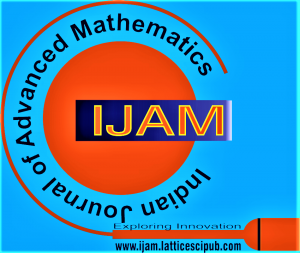![]()
Numerical Method of the Line for Solving One Dimensional Initial- Boundary Singularly Perturbed Burger Equation
Kedir Aliyi1, Hailu Muleta2
1Kedir Aliyi, Department of Mathematics, College of Natural and Computational Sciences, Ambo University, Ambo, Ethiopia.
2Hailu Muleta, Department of Mathematics, College of Natural sciences, Jimma University, Jimma, Ethiopia.
Manuscript received on 06 August 2021 | Revised Manuscript received on 10 September 2021 | Manuscript Accepted on 15 October 2021 | Manuscript published on 30 October 2021 | PP: 4-14 | Volume-1 Issue-2, October 2021 | Retrieval Number:100.1/ijam.B1103101121 | DOI: 10.54105/ijam.B1103.101221
Open Access | Ethics and Policies | Cite | Mendeley | Indexing and Abstracting
© The Authors. Published by Lattice Science Publication (LSP). This is an open-access article under the CC-BY-NC-ND license (http://creativecommons.org/licenses/by-nc-nd/4.0/)
Abstract: In this Research Method of Line is used to find the approximation solution of one dimensional singularly perturbed Burger equation given with initial and boundary conditions. First, the given solution domain is discretized and the derivative involving the spatial variable x is replaced into the functional values at each grid points by using the central finite difference method. Then, the resulting first-order linear ordinary differential equation is solved by the fifth-order Runge-Kutta method. To validate the applicability of the proposed method, one model example is considered and solved for different values of the perturbation parameter ‘ε’ and mesh sizes in the direction of the temporal variable, t. Numerical results are presented in tables in terms of Maximum point-wise error, EN,Δt and rate of convergence, Pε N,Δt. The stability of this new class of Numerical method is also investigated by using Von Neumann stability analysis techniques. The numerical results presented in tables and graphs confirm that the approximate solution is in good agreement with the exact solution.
Keywords: Cyclic chain rule; Cyclic relation; Mayer’s relation; Heat capacity ratio; Isochoric heat capacity; Compressibility.
Scope of the Article: Applied Mathematics
